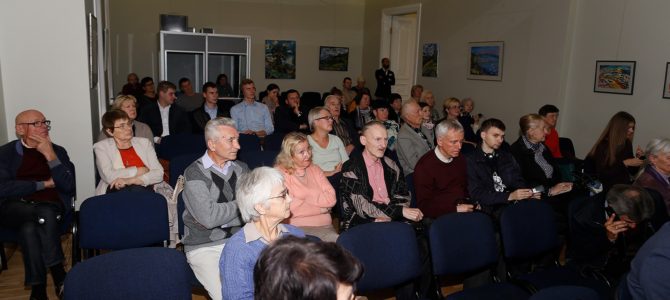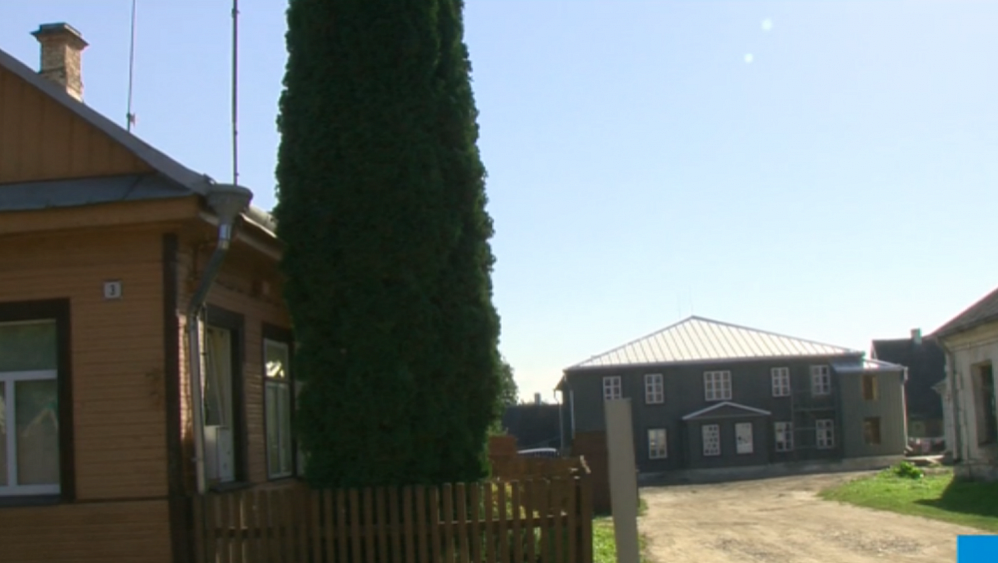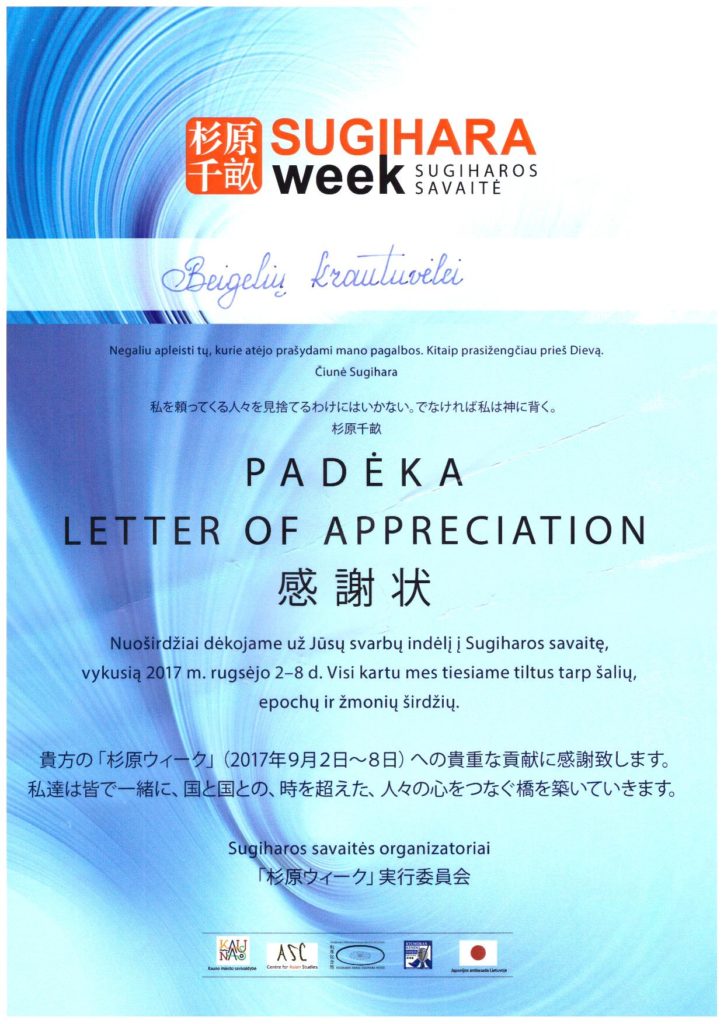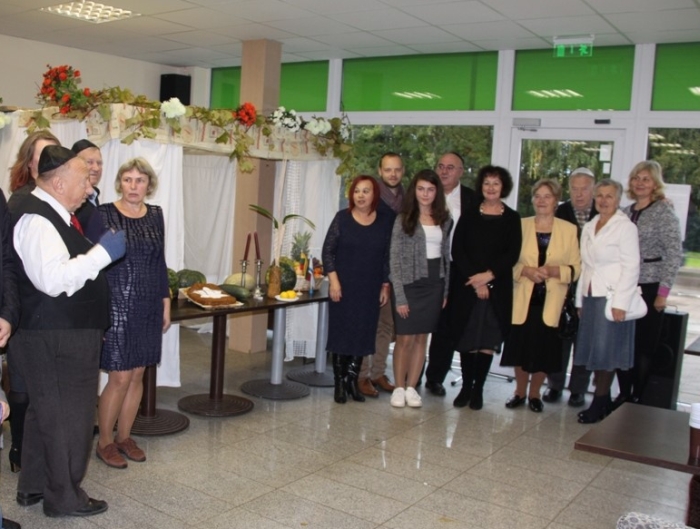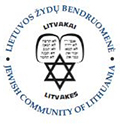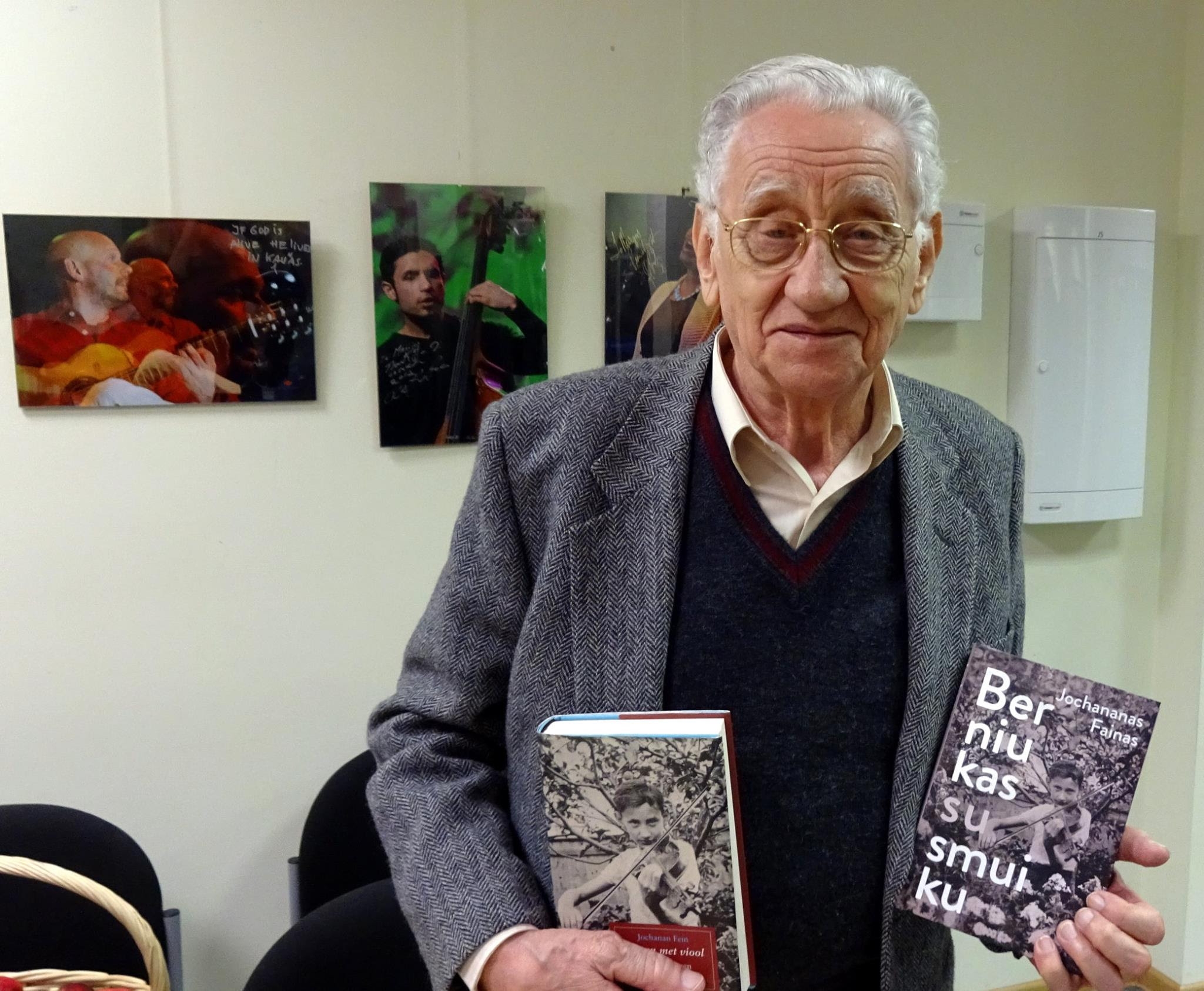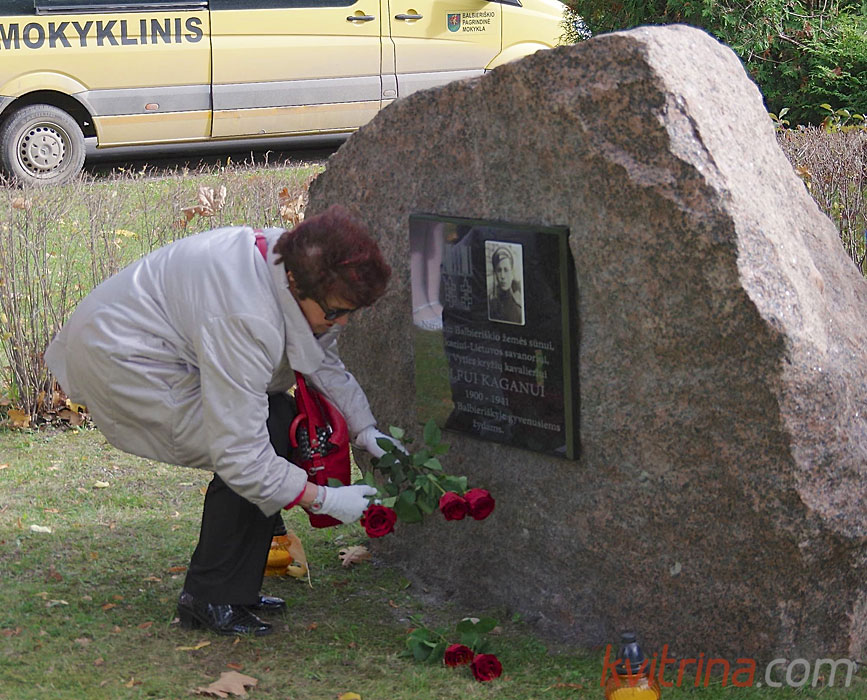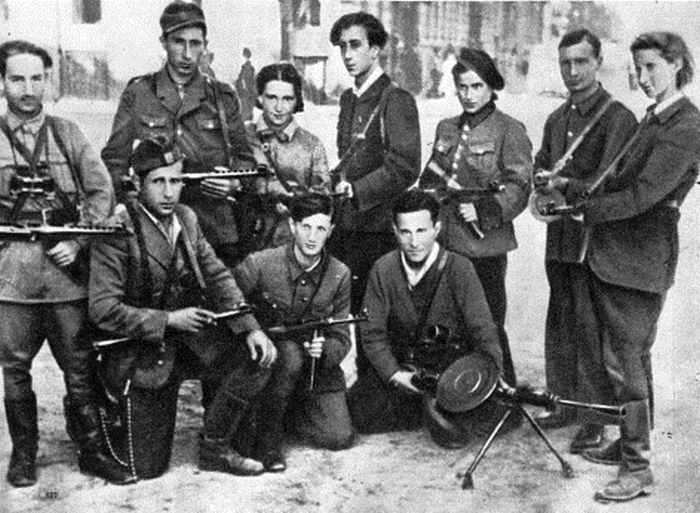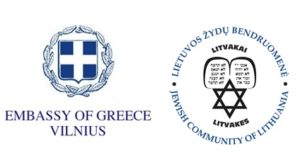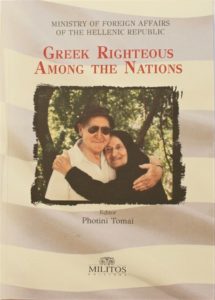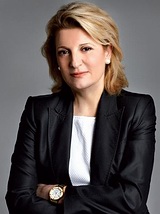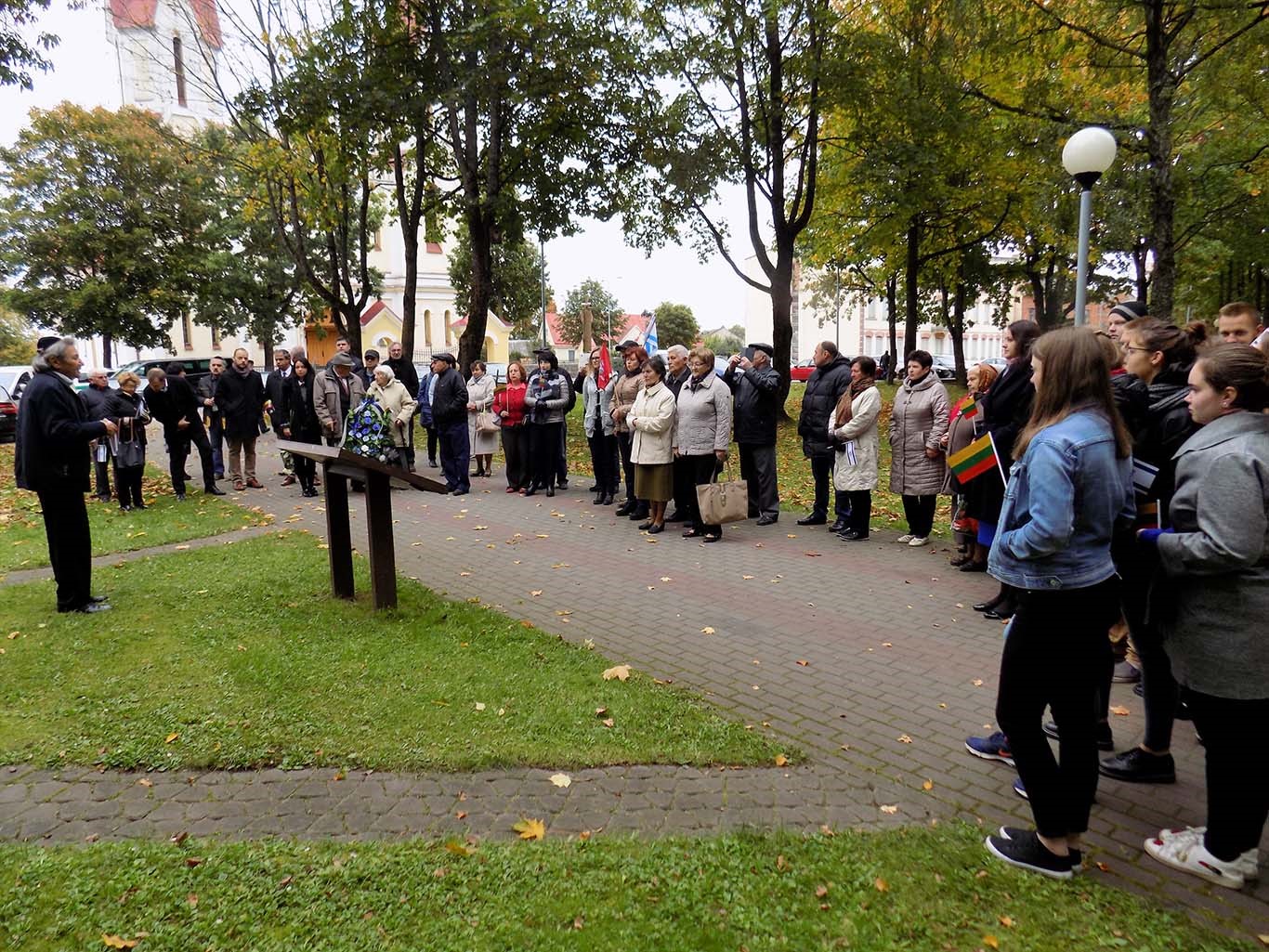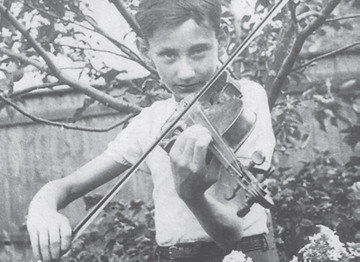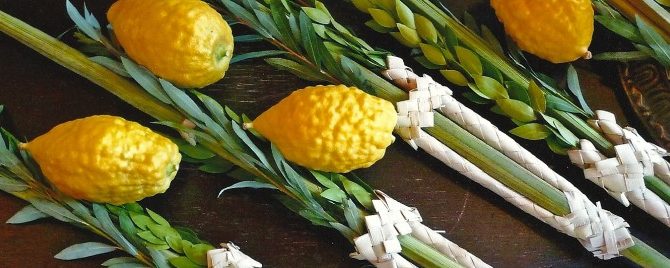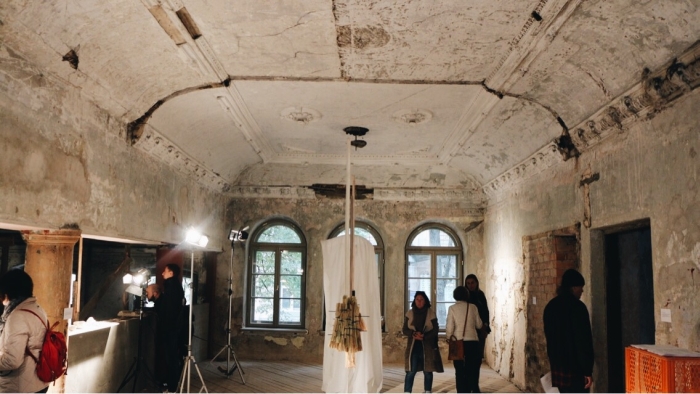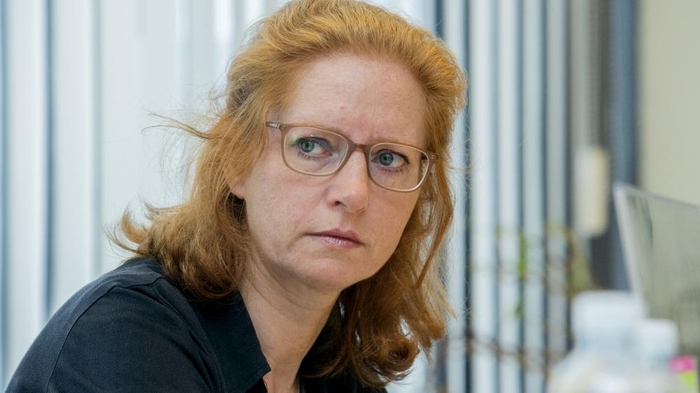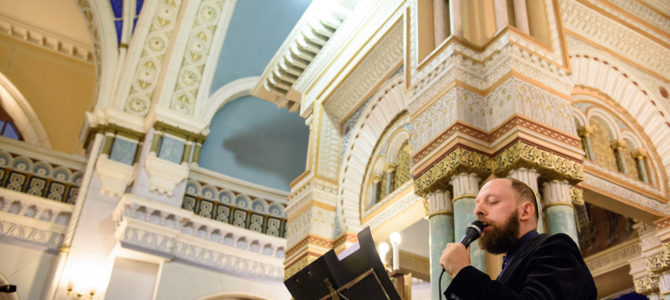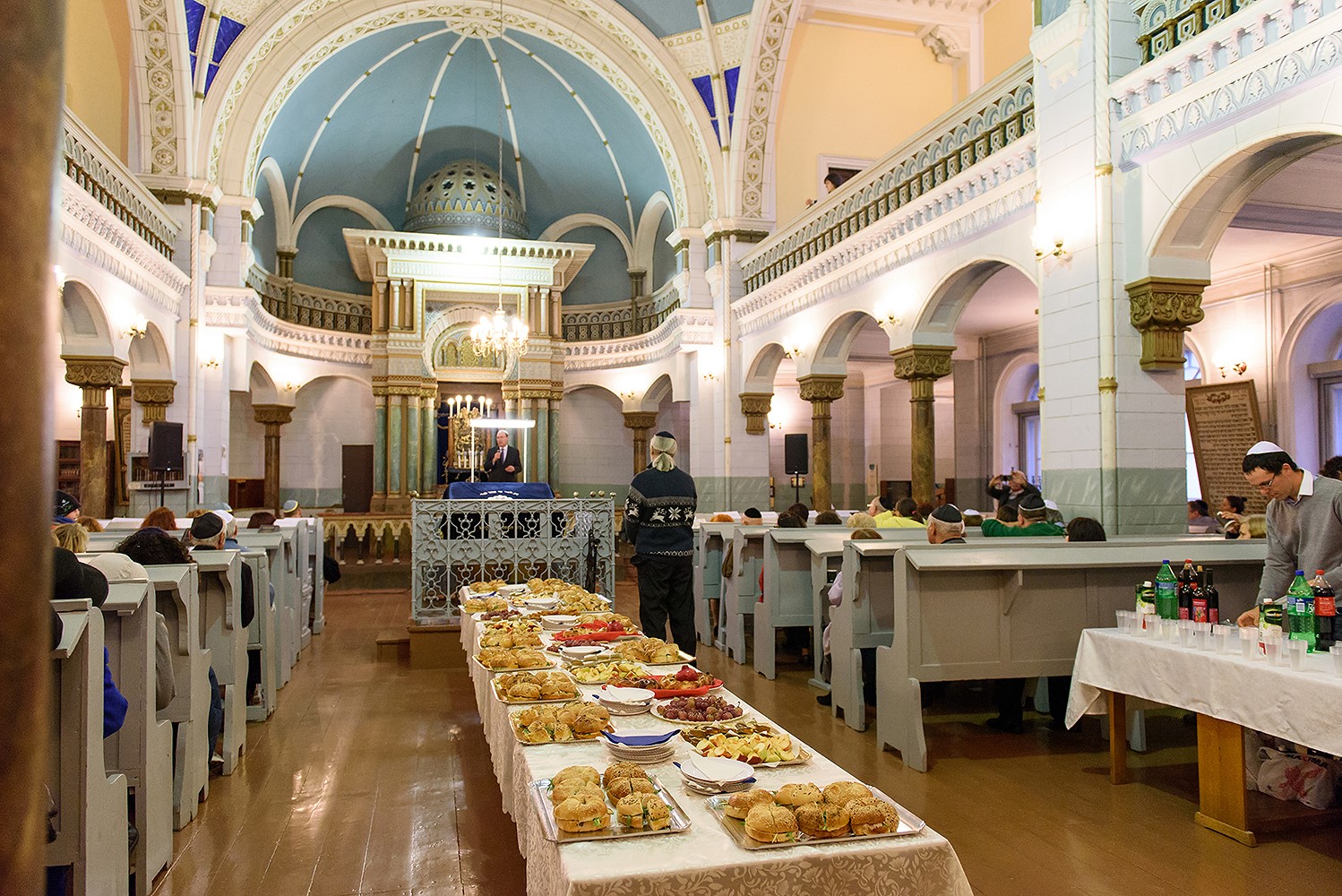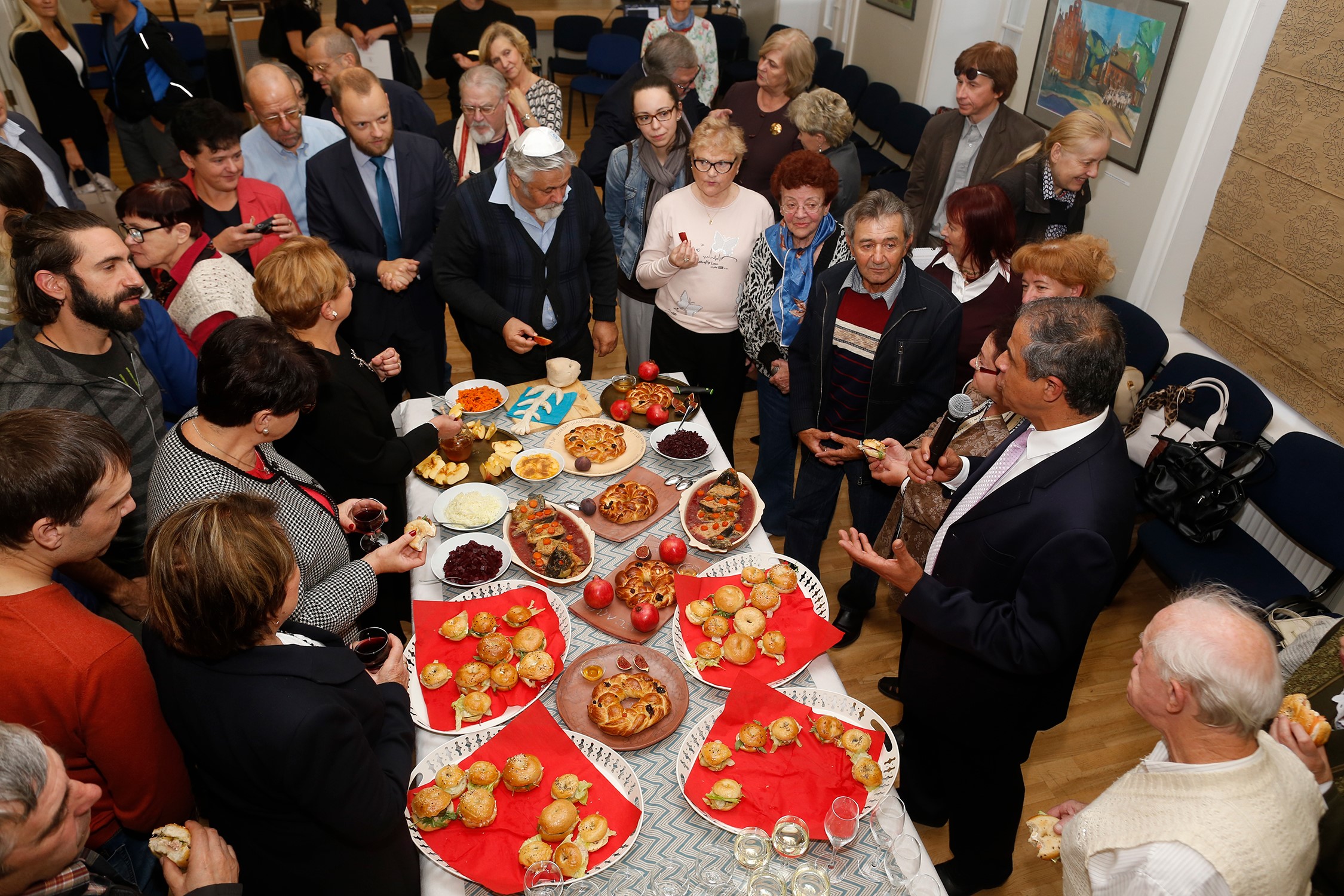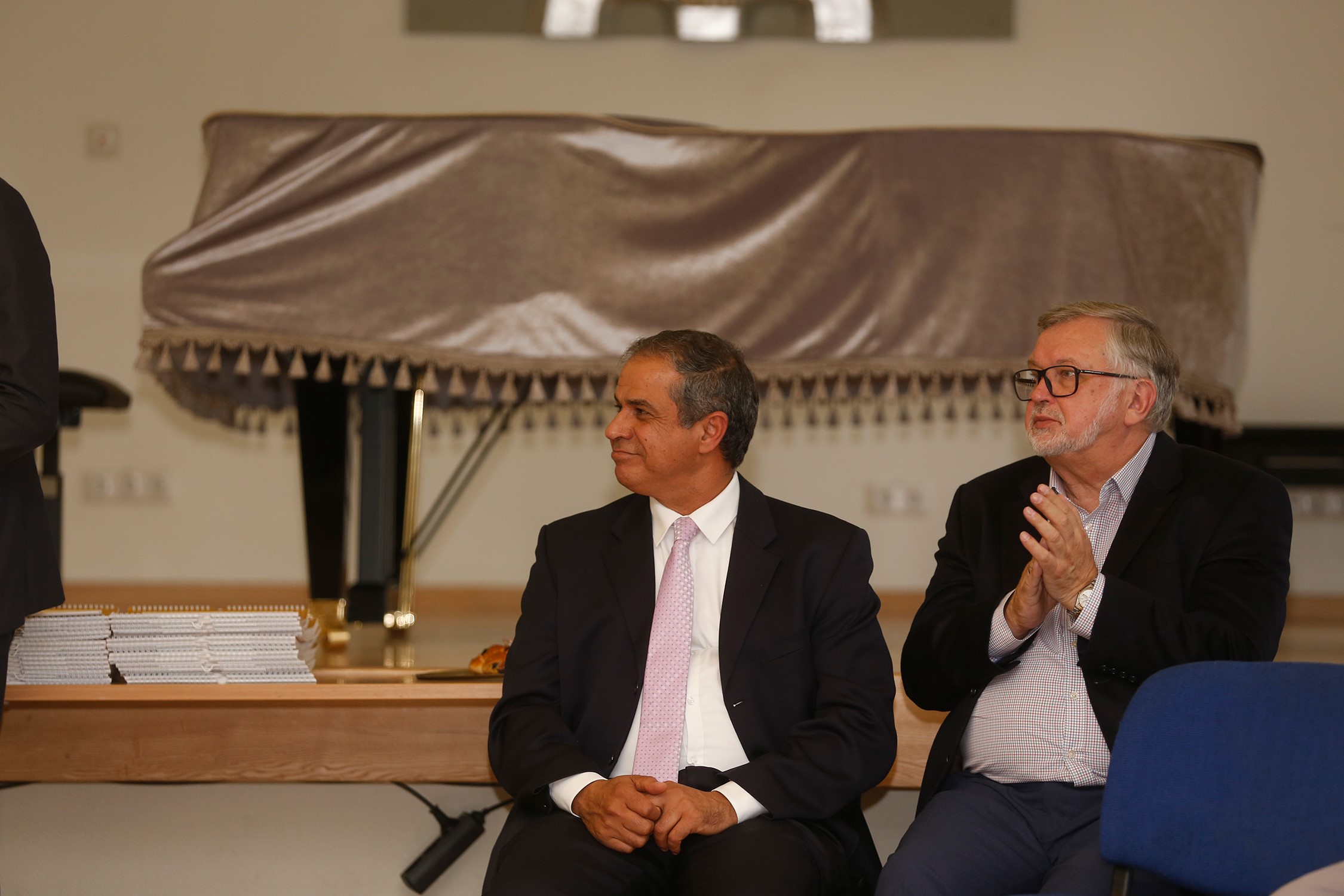
by Algis Jakštas
I first wrote several years ago about a man with an exceptional story, a man with two names and two surnames, Romuald Jabuk Weksler-Waszkinel, who was born in Švenčionys during the war and by some miracle became the only survivor from among all his family and relatives who once lived there. That miracle was the work of Piotr and Emilia Waszkinel. Jakub and Batia Veksler handed their son born February 28, 1943, over into their care and Piotr and Emilia had him baptized as a Christian.
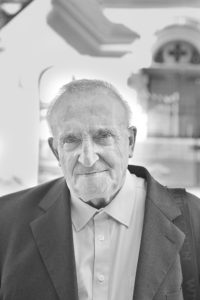
Romuald Jakub Weksler-Waszkinel now lives in Israel and has come to Lithuania at the invitation of the Polish Institute in Vilnius. He also found time to visit his native Švenčionys. He visited the Menorah statue which recalls the former ghetto gate and other sites. As I said, none of his relatives who lived in Švenčionys survived. Some were killed in the forest near Švenčionėliai, others at concentration camps. His parents died at a concentration camp.
Barbara Orszewska, project coordination for the Polish Institute in Vilnius, accompanied Weksler to Švenčionys and was happy to translate for him. Švenčionys Jewish Community chairman Moisej Šapiro also accompanied him. I spoke with him by the Menorah monument there. My first question, or more precisely request, was for him to talk about his life, worthy of a movie or book.
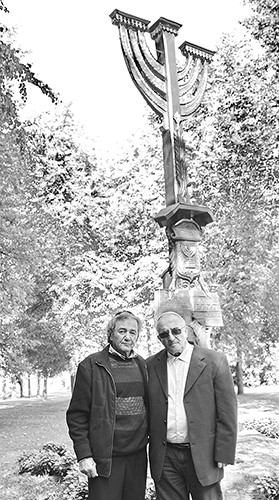
“My story is, that until I was 35 I didn’t know I was Jewish. I was always unsure about ethnicity when I tried to compare my features and appearance with those around me. I didn’t look like a Pole, and Poles lived around, or like my Polish parents. When I turned 35 my mother told me I had other parents, Jews, who were murdered during the war. She didn’t know my original name. For 14 years I sought my true roots until I found my Jewish surname, Weksler. Now I have two first names and two surnames. And this is my greatest treasure. The Jews Jakub and Batia Weksler gave me life, and without the Poles Piotr and Emilia I wouldn’t have survived. In 2009 I went to live in Israel. There I found relatives of my mother and father, there I felt as if I had come home. I am very grateful to people and God.”
What feelings overtook you when you discovered you were Jewish instead of Polish?




